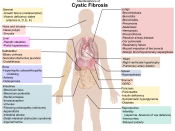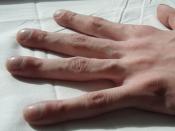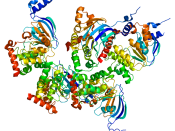In humans, several hundred genetic diseases and disorders follow the dominant-recessive pattern. If a child inherits one dominant allele and one recessive allele he or she typically does not have the disease. A carrier can pass either the dominant or recessive allele to their child. It can receive a mutated allele from the mother and a normal allele from the father, or a normal allele from the mother and a mutated allele from the father. The child develops the disease only if he or she receives a mutated allele from each parent. When both parents are carriers, there is a 25 percent chance that a child will not have the disease, a 25 percent chance that it will have the disease, and a 50 percent chance that it will be a carrier.
Recessive Inheritance Diseases
Color Blindness, defect of vision affecting the ability to distinguish colors, occurring mostly in males.
Color blindness is caused by a defect in the retina or in other nerve portions of the eye. The first detailed report on this condition was written by the British chemist John Dalton, who was himself affected by it. Total color blindness, in which all colors are perceived as variations of grey, is known as achromatopsia or monochromatism. This condition is extremely rare and affects men and women almost equally. Partial color blindness, called dichromatism, consists generally of the inability to differentiate between the green and the red or to perceive either red or green; infrequently, the confusion may involve the blues or the yellows. Dichromatism is the most common form of color blindness, affecting about 7 percent of men and less than 1 percent of women. Dichromatism is identified as a sex-linked hereditary characteristic. Color blindness also may occur as a temporary disease.
The vision of most color-blind...



Good overall
good project overall
3 out of 3 people found this comment useful.